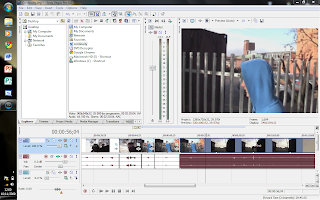Similarly to semiotics, respresentation and stereotype are not specific areas of a production that are considered respectively. Instead, they are significant factors that influence all areas of work.
- Representation is the act of communicating an idea with something other than the idea itself. Example: The symbol below represents peace, but the symbol itself does not constitute actual peace; the idea of peace is represented.

- A Stereotype is a standardised representation which usually coincides with social assumption. Example: The statement 'old people are boring,' is stereotypical. The statement represents the idea that elderly people are boring, and is standardised in assuming that this is true of all elderly people. The image below could be seen as stereotypical in the same way as the phrase.

The image above illustrates the way that representation and stereotype are never constrained to one medium of communication. It is important to understand this when constructing a media product, because it implies that representation and stereotype are controlled and affected by all factors included in that product.As an example, lets consider a short film in which the main character is a small-time London criminal. Because the audience are not actually meeting this person, but simply watching a film involving him, the character must be represented with the use of signifiers. Here is a list of areas that would need to be considered in terms of what they signify, and subsequently represent:
- Dialogue - Not only would the script-writer need to write in colloquial language with regard to the character's dialect, but the actor playing the role would need to use the correct accent when performing.
- Mise-en-scene - A lot can be learnt about a character through their surroundings and clothing. It may well be that the character's clothing contrasts with their environment, showing us that they do not belong.
- Camera - Just as a character's relationship with the surroundings can influence audience interpretation, so can a character's relationship with the camera. This relationship is, of course, indirect, but is still incredibly effective. For example, a low angled shot can make a character appear to have higher status than another character shot from a high angle.
- Editing - As is shown in the video above, Editing is an incredibly effective way of changing a character's representation. Through a basic process of selection and omission, an editor controls what information is exposed to an audience, and can therefore guide their interpretation of a character.
- Audio/Visual Effects - Although these are used to a lesser extent, combinations of grainy, desaturated video and and a faint echo applied to footsteps could make a character seem dark and shifty.
It is the smooth convergence of these separate areas that results in believable and convincing characters.










































